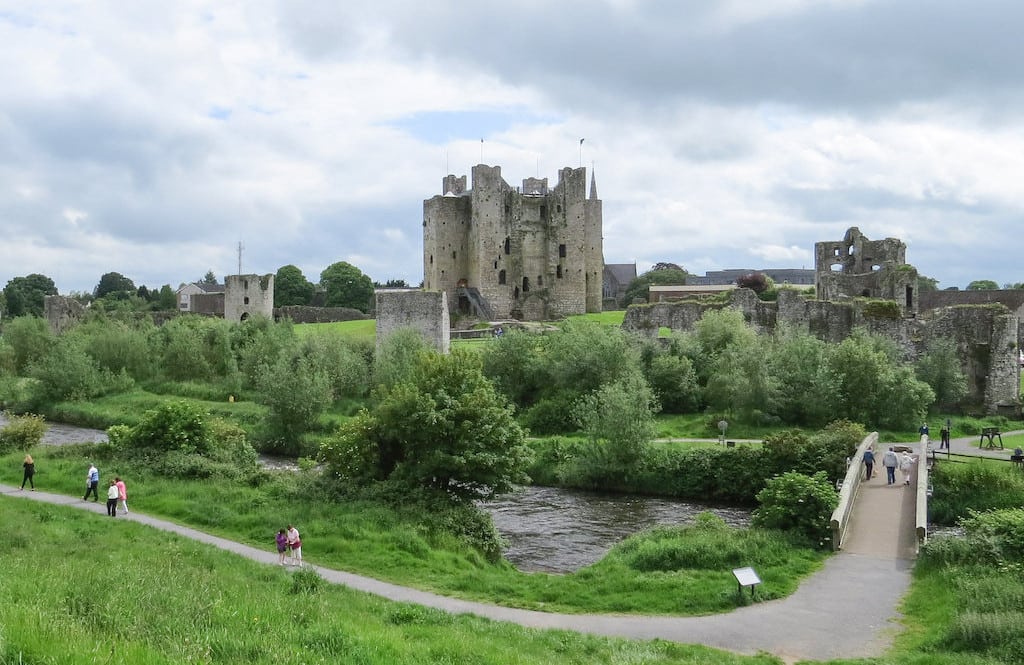Skift Take
Many tourism bureaus are trying to drive visitors to their lesser visited destinations, but Tourism Ireland's region-specific campaigns are more comprehensive, and according to the data, more successful than most.
Tourism Ireland is building on the success of past regional campaigns with the new Ireland’s Ancient East initiative, inspired by 5,000 years of history in the oldest part of the country spanning the eastern region from Dublin south to Cork.
According to the national tourism development agency, Fáilte Ireland, the campaign is hoping to drive an additional 600,000 overseas visitors to the region, representing a 20% growth in traffic, while increasing visitor revenue by 25% to $1.07 billion, in total by 2020.
Those numbers are based on the popularity of last year’s Wild Atlantic Way campaign that focused on the west coast. Kicking off in February 2014, Ireland invested $11.3 million to promote 159 destinations along the island’s less visited Atlantic shore and boost arrivals at Shannon Airport, which services the region.
Many other tourism boards have developed initiatives to drive business to areas outside their most popular cities but few have done so with such comprehensive programming and promotion.
By the end of 2014, Ireland saw a record 13% rise in U.S. travelers, totaling 1.1 million visitors who spent over $1 billion. The western region enjoyed the highest increase in visitation by percentage with 84% of tourism businesses reporting a jump in revenue. Likewise, Shannon Airport welcomed a 15% increase in terminal arrivals in 2014 over 2013.
“Many respondents in that region cited the recent Fáilte Ireland initiative, The Wild Atlantic Way, as a positive factor this year,” according to the bureau’s 2014 Business Sentiment Index.
For 2015, U.S. inbound traffic from January to July is up 15% year-over-year. Some of that can also be attributed to the huge U.S. audience for HBO’s Game of Thrones series, even though the production is actually filmed in Northern Ireland.
Ireland’s Ancient East
This week during an official reception in New York with North American tour operators and travel advisors, Ireland’s Tourism Minister Paschal Donohoe explained why he expects the Ancient East campaign to emulate the success of Wild Atlantic Way.
“We’ve seen how well Wild Atlantic Way is working,” he said. “What we’ve now done is come up with a concept that we believe will speak really powerfully to your customers who are interested in heritage, who are interested in history, and who are interested in all the romance that can surround all that.”
Ireland’s Ancient East was designed along four pillars:
- Ancient Ireland (The Birth of Civilization) — Prehistoric attractions of the Boyne Valley in Newgrange, Brownshill Dolmen in Carlow
- Early Christian Ireland (The Golden Age of Saints & Scholars) — Clonmacnoise, Glendalough, Mellifont abbey, Jerpoint Abbey, St. Canice’s Cathedral and Holycross Abbey
- Medieval Ireland (Times of Turbulence) — Kilkenny’s Medieval Mile, the Viking Quarter in Waterford, Trim Castle and the Rock of Cashel
- Anglo Ireland (Romance & Rebellion) — Great Houses & gardens, Dunbrody Famine Ship and Wicklow Gaol
Fáilte Ireland’s Managing Sales Channels brief identifies two primary target consumer segments for Ancient East — “Culturally Curious” and “Great Escapers” — representing 99 million people in four markets: UK, U.S., France and Germany.
The U.S. traveler psychographic is defined as: “Significantly more interested in things that are new to them, mind broadening and knowledge building. Will have done research and selected their preferred experiences. While U.S. [visitors] are more likely to be interested in feeling special or spoiled, this is still well below 50% of them. Value flexibility and freedom to change plans. They prefer to move at their own pace in an unrestricted way.”
Here’s the campaign launch video promoting Irish history when “pagan gods roamed the earth and the kingdoms of Ireland were won and lost by the swing of a broadsword.”
Ireland’s Ancient East illustrates a continuing evolution in tourism brand storytelling where destination marketing organizations are tapping local travel suppliers to share their own stories about their products.
For example, the video below is filled with anecdotes told by travel industry people working along the Ancient East route. One of them is Stephen Power at Loughcrew Passage Tombs in County Meath, who explains how visitors explore hidden tombs buried under cairns dating back to 3,300 B.C.
“To go into Loughcrew, you go to the local farmer and he’ll give you a set of keys and a flashlamp,” Power says. “You open a big metal door and you can travel down this corridor with stone carvings 5,000 years old.”
Speaking at the European launch of the new campaign in April, Fáilte Ireland CEO Shaun Quinn said, “The Ancient East brand should significantly transform tourism in the region, changing the east and south of this country from a transit zone to a compelling touring region.”
The Daily Newsletter
Our daily coverage of the global travel industry. Written by editors and analysts from across Skift’s brands.
Have a confidential tip for Skift? Get in touch
Tags: ireland, marketing, tourism
Photo credit: Trim Castle in County Meath is part of Ireland's Ancient East initiative. Flickr
